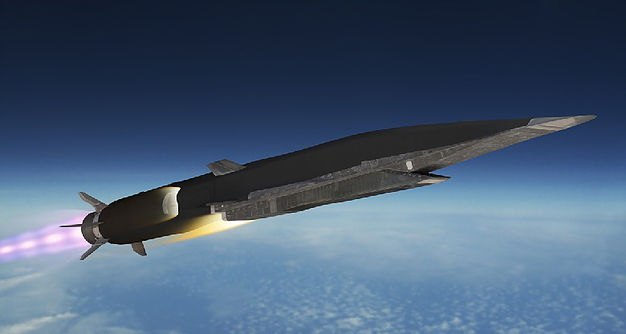
Existing radars don’t provide the almost-split-second warning needed to keep Guam, carrier strike groups in the Pacific and Kadena Air Base in Okinawa from being held hostage to a future hypersonic attack, the Pentagon’s chief technology officer said this week.
Protecting ships and bases from the hypersonic missile threat is key to the future of U.S. missile defense, Michael Griffin, the under secretary for research and engineering, said while speaking at the Center for Strategic and International Studies in Washington, D.C.
“We can see it and find it,” but “we really need to be closer to the action” to defend against a weapons technology that China, particularly, and Russia are investing in heavily.
Hypersonic weapons’ low signature in flight and high degree of maneuverability upon final approach to targets make the weapons difficult to defend against, Griffin said. He added that missile defense’s goal is to be “persistent, timely, global” in addressing existing and emerging threats.
To meet that wide-ranging challenge, “I see value [in having] one agency” with its own acquisition authorities to concentrate focus on missile defense, rather than have the services develop their own systems.
“I would like the Missile Defense Agency to set that pace” of speeding development to fielding systems to counter what Beijing and Moscow are now demonstrating in the hypersonic realm.
Griffin said he expected future budgets to provide funds for lasers that the agency can more rapidly develop and field. For example, to field space-control weapons, “we need to be in the megawatt class” of lasers. He added, “we also need to be able to get after the threat we see today” against the United States’ space-based sensors integral to warfighting.
One way to disaggregate the threat would be to have a constellation of satellites in space to reduce vulnerability. “I want us already to be working on it.” But he didn’t want to put a timetable on that aspect of defense. “We’ll get it as soon as we can get it,” implying the need for budgetary support as well as quicker technological development.
Similarly, Griffin acknowledged the vulnerability of land-based and sea-based radars to attack. From separating the illuminators from the site to other possibilities, “we are re-looking all of that” to improve survivability.
When asked what the next missile defense age encompasses, Griffin cited unmanned aerial, ground and undersea vehicles and swarming attack as immediate threats. Further out, “we need to learn how to defend and perpetrate directed energy and high-powered microwave [for] an electronic kill.”
Griffin said earlier in his talk that “we have a lot of ground to make up … in modernizing our offensive and defensive force structure” in missile defense. Griffin added the “last time we really invested in transformative capabilities that overwhelmed adversaries [in Desert Storm] was the Reagan era. … It’s time for us to get back to work.”
Missile defense readiness will “cause our adversaries to think twice, we hope” before attacking and create confusion as to how the United States might respond.





